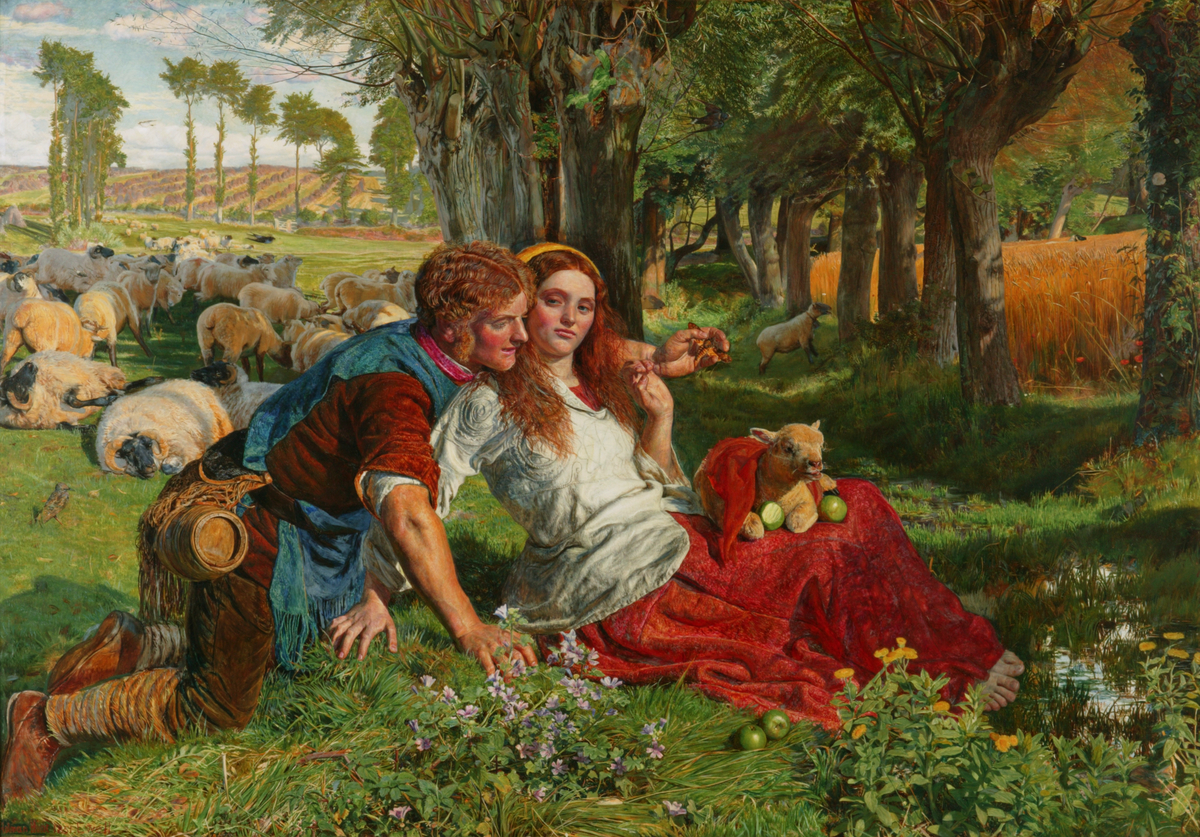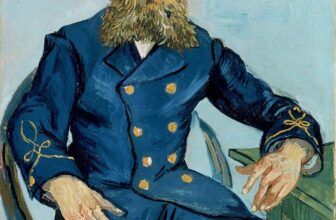
Meaning of The Hireling Shepherd All About
William Holman Hunt’s 1851 painting The Hireling Shepherd stands as one of the most provocative and richly symbolic artworks of the Pre-Raphaelite Brotherhood. It is a masterclass in visual storytelling, layered with social commentary, religious allegory, and a vivid portrayal of Victorian life and anxieties. In this analysis, we delve into the meaning, symbolism, and artistic context of The Hireling Shepherd, unpacking the elements that make it a pivotal work in Hunt’s oeuvre and in 19th-century British art.
At its surface, The Hireling Shepherd presents a seemingly idyllic rural scene. A young man, presumably a shepherd, reclines in a lush English meadow, engaging in flirtation with a young woman. Sheep mill about in the background, some straying into a cornfield, an ominous sign for those familiar with agricultural practice. Despite the pastoral setting, the painting is not a simple romantic or bucolic image. Instead, it is a critique, both religious and social, of neglect and misdirection.
The title itself refers to a biblical allegory. In the Gospel of John (10:11–13), Christ contrasts the Good Shepherd, who lays down his life for the sheep, with the hireling, who cares not for the sheep and flees at the first sign of danger. Hunt uses this reference to frame the male figure in the painting as a symbolic ‘hireling shepherd,’ more concerned with personal pleasures than with his duty. The sheep, left unattended, stray into danger.
Symbolism and Interpretation
The Hireling Shepherd is suffused with symbolic imagery. Each element in the painting contributes to a broader commentary on moral decay, religious negligence, and societal disarray. Here are the primary symbolic components:
1. The Shepherd
The central male figure represents not just a literal shepherd, but clergy and religious leaders more broadly. In the Victorian era, there was growing criticism of the Church’s failure to address the spiritual and material needs of the populace. Hunt critiques clergy who are more interested in theological posturing or personal gain than in the care of their ‘flock’, a term often used for parishioners.
2. The Young Woman
The woman’s provocative pose and passive demeanor suggest seduction and vulnerability. She is symbolic of the laity, led astray by inattentive spiritual leadership. Some scholars interpret her as representing the English nation, seduced by materialism and sensual pleasures while morality declines.
3. The Sheep
The sheep, especially those wandering into the cornfield, represent the faithful who are being led, or neglected, into danger. In agrarian societies, sheep invading a cornfield was a serious issue, as it could ruin the crop. This visual detail is Hunt’s allegory for spiritual destruction resulting from clerical irresponsibility.
4. The Lamb
The shepherd holds a sickly lamb and points out the fatal impact of a parasitic liver fluke (a trematode). The disease, fluke-induced rot, is another metaphor: moral and spiritual decay that results from improper nourishment or guidance.
5. The Apple Blossom
The woman holds a sprig of apple blossom, a traditional symbol of temptation and the Fall of Man. This further strengthens the narrative of seduction and moral lapse.
Artistic Style and Movement
The Hireling Shepherd exemplifies the aesthetic and ideological tenets of the Pre-Raphaelite Brotherhood, a group Hunt co-founded in 1848. Rejecting the academic conventions epitomized by Sir Joshua Reynolds, the Pre-Raphaelites sought to return to the detailed, vibrant, and symbolic art of late medieval and early Renaissance Europe.
In terms of technique, Hunt employed a vivid palette and intense attention to detail, painting en plein air (outdoors) to capture the natural setting authentically. The microscopic rendering of flora and fauna serves both a decorative and symbolic purpose, aligning with the Brotherhood’s belief in the moral seriousness of art.
Societal Commentary
Beyond religious allegory, the painting also offers a critique of rural life and gender dynamics in Victorian England. The rural poor were often idealized in urban discourse, seen as bastions of English virtue. Hunt’s portrayal challenges this stereotype, revealing a more complex and sometimes darker truth about rural disaffection, moral looseness, and socio-economic vulnerability.
The painting also critiques the Romanticized notion of shepherding. Instead of an image of pastoral innocence and harmony, Hunt offers a cautionary tale about dereliction and distraction. The hireling shepherd’s gaze and posture suggest lust and negligence, raising questions about male authority and its misuse.
What Is Happening in The Hireling Shepherd?
On the literal level, the shepherd is showing the young woman a cub lamb. However, the true ‘action’ of the painting lies in what is being neglected. While the man is engaged in flirtation and pseudo-scientific display, the sheep wander dangerously into the cornfield, an act that could worsen the crop and the animals get lost.
The moment captured is one of negligence, where personal indulgence overtakes professional duty. Hunt’s message is not hidden, it is blazoned in the juxtaposition of what is foregrounded (flirtation and idleness) against what is backgrounded yet crucial (straying sheep, lost direction).
When exhibited at the Royal Academy in 1852, the painting drew a mixed response. Some viewers were scandalized by its earthy realism and implicit eroticism. Others were struck by its moral message and symbolic complexity. Hunt himself explained the painting’s intent in a letter, emphasizing that it was meant to show “the folly of those who neglect obvious duties for self-indulgence.”
In the years since, the painting has grown in critical appreciation. Art historians now consider it one of Hunt’s most important works, exemplary of Pre-Raphaelite realism and thematic ambition. It continues to invite new interpretations and remains a popular subject for scholarly analysis.
Where Is The Hireling Shepherd Today?
Today, The Hireling Shepherd is part of the collection at the Manchester Art Gallery in the United Kingdom. It remains one of the gallery’s standout pieces, frequently reproduced in art history textbooks and often cited in discussions about Victorian art, symbolism, and social critique.
The Hireling Shepherd by William Holman Hunt is far more than a picturesque pastoral scene. It is a rich allegorical critique, filled with symbolic elements that challenge the viewer to consider themes of moral decay, spiritual neglect, and societal irresponsibility. Through meticulous detail, vivid color, and layered symbolism, Hunt creates a painting that continues to resonate with audiences and provoke thoughtful analysis.
Whether interpreted through a religious, social, or psychological lens, The Hireling Shepherd remains a profound statement on the human condition, the role of leadership, and the dangers of distraction. As such, it secures its place as one of the most enduring and thought-provoking works of the Pre-Raphaelite movement.




